The Best Patio Heaters to Beat The Chill
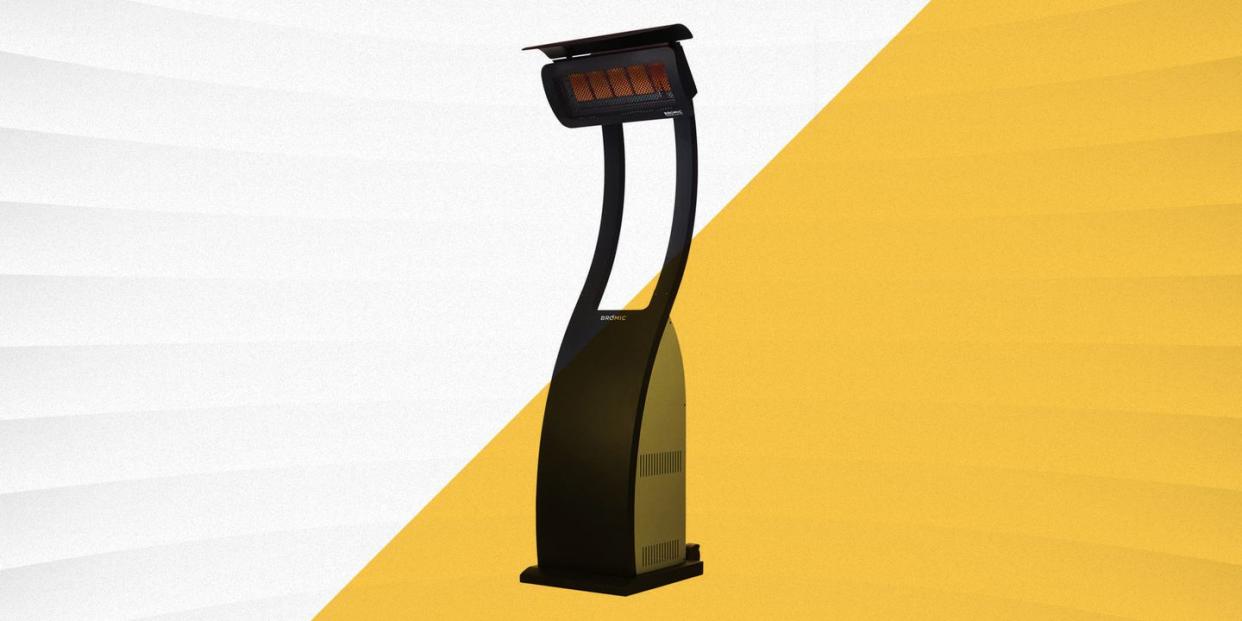
"Hearst Magazines and Yahoo may earn commission or revenue on some items through these links."
Patio heaters seem like an unlikely tool in the ongoing battle with the pandemic, yet that’s exactly what they are. By positioning a patio heater or two outside, people have discovered that they can safely gather with friends and family—with maximum fresh air ventilation.
But let’s just say that we can put the pandemic aside for a moment (pretend it’s possible). You’re sitting outside by yourself, maybe your dog is with you, these appliances are still great. You can stay more comfortable than you would otherwise, while enjoying the outdoors and extending the use of your patio or deck area to four seasons.
Take a look below at quick info on five of the best heaters, then scroll down for buying advice and in-depth reviews of these and other models.
How They Work and Things to Consider
Most patio heaters are either gas-fired or electric. Both types emit infrared energy. Unlike a space heater, which blows air across a hot electric coil to warm the air, a patio heater projects an infrared beam that travels through the air without heating it. When the infrared energy strikes a solid object like a person or furnishings, the beam converts to heat.
Patio heaters take the chill off, but they are not designed to provide indoor levels of comfort. This is especially evident in the dead of winter or when the patio or deck is shaded by the house so the sun isn’t providing infrared energy of its own.
To really ward off winter cold, you’ll need more than one heater. That’s simple physics. The more BTUs you have heading at you, the warmer you feel.
It also helps to block the wind if you can, dress appropriately, and position yourself to gain the heater’s full effect. For example, if you’re seated by an outdoor table that’s absorbing some of the infrared output, your upper body will be warmer than your legs because the cold table will be hogging some of that infrared energy. Give yourself every thermodynamic advantage by staying close to the heater, and don’t let furnishings get between you and its output. Also, store seating and seat cushions in the house to keep them warm, or turn the heater (or heaters) on a half an hour before going outside to allow it to warm furnishings.
Electric vs. Propane vs. Natural Gas
When determining whether you want a gas or electric heater, be aware each has its pros and cons.
Electric
Advantages
• They can’t be blown out by the wind.
• Convenience: There’s no need to refill a propane tank.
• They require little maintenance other than vacuuming to remove bug nests or cobwebs during the off season.
• Permanently installed types become home features and contribute to resale value.
Disadvantages
• Permanent models come with increased costs owing to the need for a building permit and work performed by a licensed electrician.
• Electric is more expensive to operate, in most cases, compared to fuel-fired.
• The fixed location may not always suit the seating arrangement.
Propane
Advantages
• They’re portable. A wheeled propane heater can be moved around on the patio or deck for better wind protection or to suit the seating. This also means they can be wheeled out of the way and stored in a shed or garage during the summer.
• Compared to electric models, they’re less expensive to operate.
Disadvantages
• Wind can blow out the burner.
• They require cleaning and inspection to ensure bug nests and dirt aren’t blocking a burner, orifice, or burner screen.
• Propane tanks need to be refilled.
Natural Gas
Advantages
• Essentially the same as propane, but with the additional perk of being less expensive to operate (and never requiring a refill since gas is piped into it, like the home’s furnace).
Disadvantages
• Again, the same as propane, save that its fixed location may not always prove ideal heating relative to seating arrangements.
How We Test and Select
In a head-to-head matchup, we’ve tested two of the most popular and inexpensive types of these appliances. One is (at the moment) perhaps the most widely sold home center appliance in the U.S., and the other is its Amazon equivalent. We’ve also listed a few other untested appliances that we’ve selected after quizzing manufacturers, plowing through dozens of web sites, and reading reviews from customers and other outlets. And we’ve factored in our own experience with heating appliances.
—BASIC PARASOL WITH BLACK FINISH—
Amazon Basics B07C78LRVT
BTUs: 46,000 | Heating area: 250 sq ft
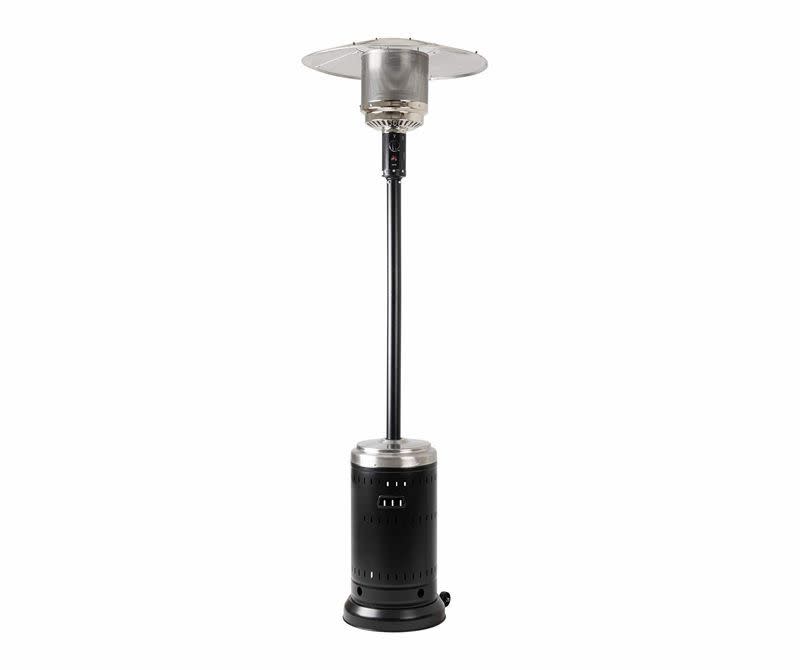
B07C78LRVT Heater
$135.76
amazon.com
We were pleasantly surprised at how easy it was to assemble this heater. Its directions aren’t great, but the hardware is packaged and labeled in a manner that it makes it nearly impossible to make a mistake. It took us about 15 minutes to put together (with our own screwdriver and socket set). More importantly, the B07C78LRVT patio heater heats up quickly and provides a cozy warm area under it. For people in windy areas, it does come with a short length of chain to lash it to an anchor and help it stay upright, and you can fill its hollow base with sand, providing more stability. We liked its wheeled base and found it’s very easy to move the heater on a concrete or paved surface. It would be somewhat less easy to move the heater over deck boards, we would think, but we didn’t try it on a typical wood-frame deck.
Compared to the Hampton Bay patio heater below, we noticed very little difference in this Amazon Basics model, save for the wheeled, counter-weighted base. Its two-piece column is a little thicker and sturdier, too, with threaded ends. Attach the two column pieces like threading together two pieces of pipe. Whether that contributes to the overall durability, we can’t say. Perhaps it might make it more likely to withstand being tipped over by a wind gust. Then again, if you fasten it properly, that shouldn’t happen anyway. Other than those minor differences, this appliance is a little taller than the Hampton Bay. From the floor to the top of the parasol measures 92 inches, whereas the Hampton Bay is 87. We can’t vouch for durability, but the fit and finish were both good. All holes aligned properly, parts were properly cut to size and deburred, and the overall appearance was good.
—BASIC PARASOL IN STAINLESS STEEL—
Hampton Bay NCZH-GSS
BTUs: 48,000 | Heating area: 200 sq ft
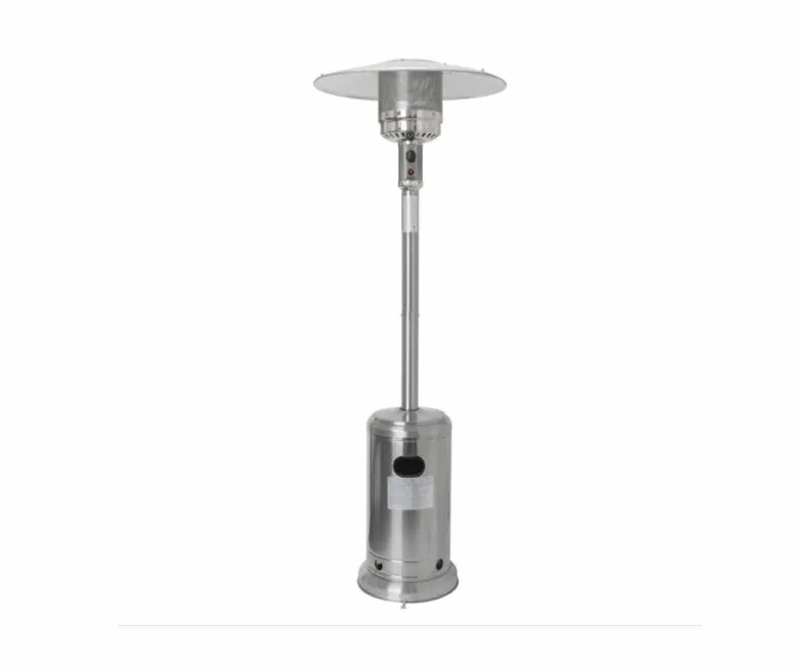
NCZH-G-SS Heater
$78.00
amazon.com
Countless home and restaurant owners have bought this unassuming stainless-steel heater. It’s fairly attractive, in a no-frills sort of way, and incredibly inexpensive. We couldn’t assess durability in this test, but we know a restaurant with a fleet of them, and after more than a year of commercial duty, they’re still going strong. Several of them have been knocked over in the wind and are pretty badly dented—but they still work.
We had a very easy time assembling the NCZH-GSS. The hardware labeling isn’t good, nor are the instructions, but the step-by-step illustrations are reasonably well drawn. We could glance at them, and then select the correct fastener. We got it together in about 15 minutes. The NCZH-GSS is a little shorter than the Amazon Basics heater above. That, combined with a slightly higher BTU rating, means that you feel the warmth a little sooner using this model. There are a few other small difference with this appliance compared to its neighbor above. No wheeled base means that you have to carry it where it needs to go. Though it’s not heavy, weighing about 33 pounds. Also, the base is a hollow pan with three stainless-steel tabs projecting outward. You drive a screw through each tab to fasten it to the surface below. Obviously, that gets tricky if you have this standing on a concrete or paver patio. You’d need masonry screws. Otherwise, this is a pleasant and effective appliance that quickly and consistently provides a cozy ring of heat.
Non-Tested Options
—DIRECTIONAL GAS HEAT—
Bromic BH051001
BTUs: 21,300-38,500 | Heating area: 180 sq ft
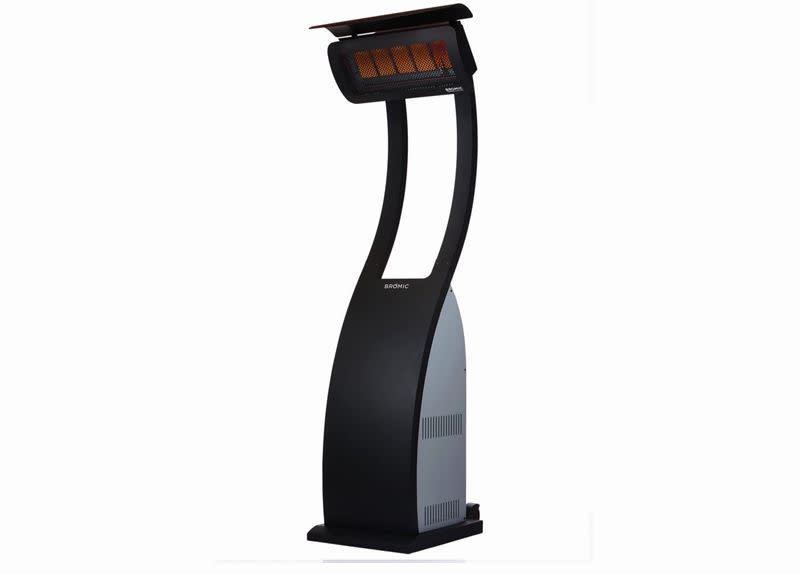
BH0510001 Heater
$1670.00
amazon.com
Not that we have anything against parasol (also called mushroom) heaters, which provide a widely dispersed infrared pattern, but the Bromic’s strong suit is directional heat. Its high, tilting head directs the warmth right where you want it. We also like its variable output that can help you handle weather from a mild chill to downright frosty.
—DIRECTIONAL ELECTRIC HEAT—
Dr. Infrared Heater DR-238
Wattage: 900; 1,200; 1,500 | Heating area: 135 sq ft
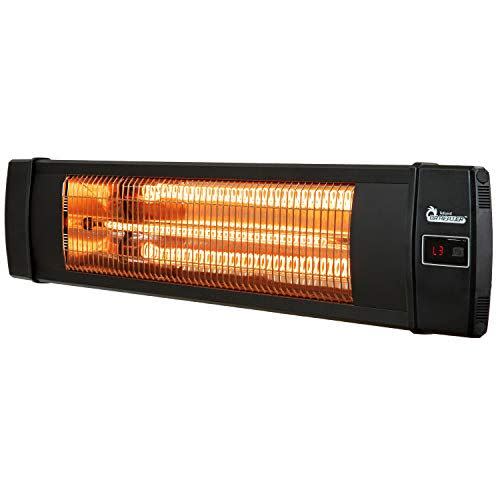
DR-238 Heater
$126.71
amazon.com
Mount this heater on a wall or ceiling then plug it into a 120-volt outlet to supply three levels of infrared heat, which you control using a remote. It has an ETL (an international certification agency) listing for indoor and outdoor use, allowing you to employ it in your garage or basement if it’s chilly in there, too. Its aluminum housing withstands the elements better than one made of plain, painted steel.
—CLASSIC DESIGN—
Fire Sense 01775
BTUs: 46,000 | Heating area: 176 sq ft

01775 Heater
$239.99
amazon.com
In order for an appliance to pass muster with us, we look at its quality of construction, materials, owner’s manual, and the general availability of spare parts. (Being able to clearly identify its parent company, who they are, and where they’re located doesn’t hurt.) When we looked at those features and qualifications of the 01775, we came away confident in its capability. It appears to be a more robustly built version of the two parasol heaters above. The 01775 is built out of 304 stainless steel, and its owner’s manual is clear, with well-rendered drawings and clear instructions. We found spare parts for it without having to do much searching. Its counter-weighted base should help it stand up in the wind, and its wheels facilitate moving it around—either to place it out of the wind or for a more favorable position relative to people sitting nearby. Just tip it back and roll it where it needs to go.
—POWERFUL ELECTRIC—
Bromic BH0402003
Wattage: 6,000 | Heating area: 160 sq ft
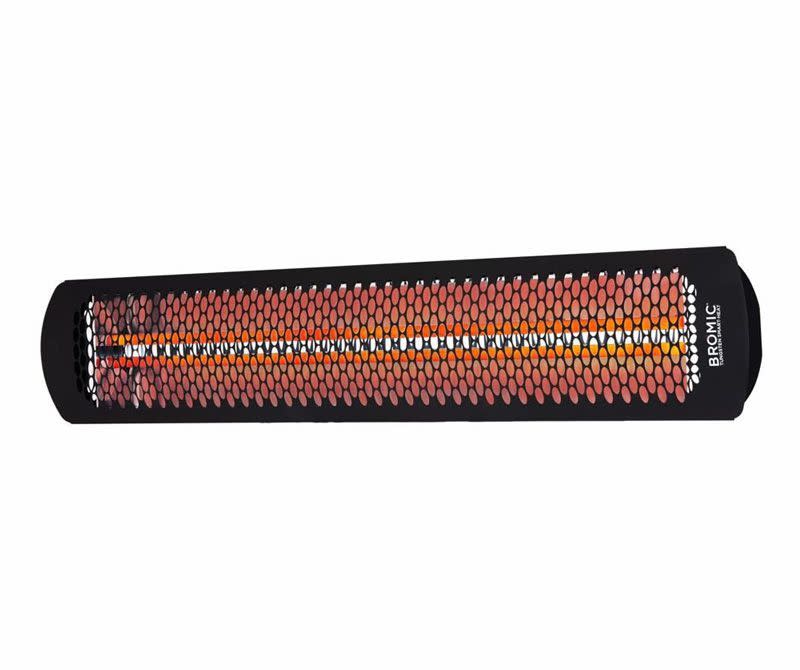
BH0420033 Heater
$801.00
amazon.com
When you need serious and relentless heat without the concern of running out of fuel, flip the switch on this 240-volt appliance. Although rated as an exterior heater, Bromic says up front that the BH0402003 is really intended to be installed under an overhang of some type, either on a ceiling or a wall. On the other hand, if you’re looking for something with a finished appearance, the company makes a recess kit for it. But it’s so sleek—aided in part by its black ceramic coating—that it would be a bit of shame to cover it up. Either way, you’ve got options.
—UTILITARIAN—
Mr. Heater MH30T
BTUs: 10,000-30,000 | Heating area: 120 sq ft

MH30T Heater
$102.99
amazon.com
Suppose you’re fed up with all this monkeying around with patio heaters, their availability, whether they’re any good, etc. We have an alternative for you—an industry classic, no less—and that is this small, dual-head infrared tank top accessory from Mr. Heater. Get a couple of them, set them up to project heat from multiple angles, and you’re in business. As simple as the MH30T looks, it’s not primitive. The heat output is variable from 10,000 to 30,000 BTUs, and it features an easy push-button ignition. And unlike a patio heater, this appliance is a good bit more versatile. Bring it anywhere you need heat, from the backyard to the frozen lake for ice fishing to the work site.
You Might Also Like
